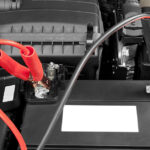Dealing with plumbing problems caused by damaged or deteriorating pipes can be a real headache for homeowners and property managers. The crucial question that often arises in such situations is whether to opt for pipe relining or pipe replacement.
Both procedures, conducted by a professional plumber in Melbourne, aim to get your pipes working again, but they differ in price, procedure, and time it takes. In order to assist you in choosing which option is best for you, we’ll compare pipe replacement versus pipe relining in this blog post.
Pipe Relining: An Innovative Solution
Pipe relining, also known as cured-in-place pipe (CIPP) lining, is a cutting-edge technique that involves repairing damaged pipes from the inside. It eliminates the need for extensive excavation, as the process is completed through existing access points, such as cleanouts or pipe ends. The following are some key advantages of pipe relining:
Minimal Disruption
One of the most significant advantages of pipe relining is its minimal disruption to the property. Traditional pipe replacement typically involves digging up the yard or breaking through walls and floors, leading to significant mess and inconvenience. In contrast, pipe relining requires minimal digging, preserving your landscape and interior spaces.
Cost-Effectiveness
Pipe relining can be a cost-effective option in many cases. While the upfront cost may be slightly higher than traditional pipe replacement, the savings from reduced labour and restoration expenses can make it a more budget-friendly choice in the long run. Additionally, the avoidance of property damage during the process can save you from costly repairs.
Faster Completion
Pipe relining is generally quicker to complete compared to traditional pipe replacement. The curing process of the newly installed lining takes anywhere from two to three hours, once set, your drainage system is as good as new. In comparison, pipe replacement can be complex and time consuming. It can take several days for completion, especially for large scale projects.
Enhanced Durability
The new lining used in pipe relining is made of durable materials like epoxy resin, which enhances the longevity and structural strength of the pipes. As a result, your rehabilitated pipes become more resistant to corrosion and root intrusion, ensuring a longer lifespan for your plumbing system.
Pipe Replacement: When is it Necessary?
As the name suggests, pipe replacement involves the meticulous process of removing old, damaged pipes and replacing them with new ones. This time-tested method typically requires the expertise of a professional plumbing company, such as Your Local Plumbing, and becomes necessary in specific situations:
Extensive Pipe Damage
If your pipes have suffered extensive damage due to age, corrosion, or external factors, pipe replacement may be the only viable solution. Severely cracked, collapsed, or heavily degraded pipes may not be suitable for relining.
Incorrect Pipe Material
In some cases, older properties may have pipes made from outdated or problematic materials, such as lead or polybutylene. In such instances, replacing the pipes with modern materials is essential for the health and safety of the occupants.
Resizing or Rerouting
If you need to alter the pipe’s size or reroute the plumbing system to accommodate changes in your property layout or plumbing needs, pipe replacement becomes the more practical option , as suggested by your trusted plumber in Melbourne.
Code Compliance Requirements
Building codes and regulations may mandate pipe replacement in certain situations to ensure the plumbing system meets current safety and environmental standards.
Making the Right Choice: Factors to Consider
When facing plumbing issues and confronted with the decision between pipe relining and pipe replacement, it’s essential to carefully consider various factors to make the right choice for your specific situation. Both methods have their advantages and limitations, and understanding these key factors will help you determine the most suitable solution for your plumbing needs.
Severity of Pipe Damage
The extent of the pipe damage is critical in choosing between pipe relining and pipe replacement. If your pipes have minor issues, such as small cracks, leaks, or minor root intrusion, pipe relining may be a viable and cost-effective solution. Pipe relining can effectively rehabilitate and reinforce the existing pipes, providing a long-lasting fix for such problems.
Budget Constraints
Budget considerations are a significant factor in any home improvement project, including plumbing repairs. While pipe relining can have a slightly higher upfront cost compared to pipe replacement, it’s important to consider the long-term savings it offers. Pipe relining minimises property damage and restoration expenses, leading to potential cost savings in the future.
Time Constraints
The urgency of the plumbing repair is another crucial factor to consider. Pipe relining typically takes less time to complete compared to traditional pipe replacement. The curing process of the new lining used in pipe relining can be completed within a few hours, allowing you to resume normal water usage relatively quickly.
Future Property Plans
Consider any future property plans or renovations that might impact your plumbing system. If you have plans to expand your property, remodel the kitchen or bathroom, or make any other significant changes, discuss these with a professional plumber in Melbourne.
Conclusion
Both pipe relining and pipe replacement offer viable solutions for addressing plumbing issues. Pipe relining is a groundbreaking technique that provides minimal disruption, cost-effectiveness, and enhanced durability. It is particularly beneficial for addressing minor to moderate pipe damage. On the other hand, pipe replacement becomes necessary when pipes are severely damaged, made from problematic materials, or require resizing or rerouting.
To make an informed decision, it’s essential to consult with a reputable plumbing professional like Your Local Plumbing. Their expertise will allow them to assess your specific situation and recommend the most suitable option for your needs. By understanding the benefits and limitations of both pipe replacement and pipe relining methods, you can ensure the longevity and efficiency of your plumbing system while minimising the impact on your property.
Also read: Gas Line Installation Denver











